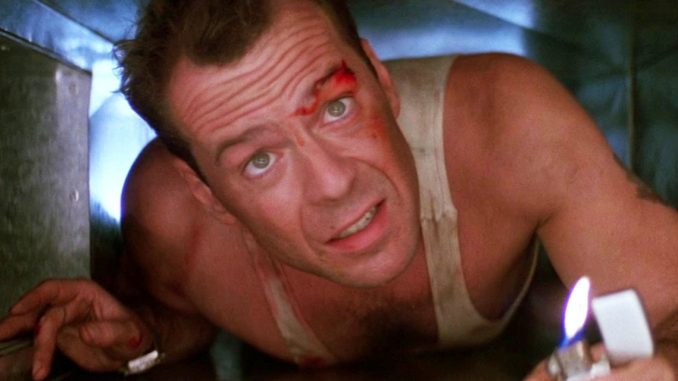
The mid-to-late eighties was perhaps the greatest period for action films in cinematic history. Over a five-year period, beginning in 1984, we got Temple of Doom, The Terminator, Police Story, Aliens, Lethal Weapon, Predator and Robocop. But above them all stands Die Hard, a film which made movie stars out of both TV actor Bruce Willis and stage thespian Alan Rickman, and which has since become a Christmas classic – despite being released in July.
It was patient zero for an entire sub-genre of “Die Hard in/on a ____”, where the blank could be filled in with virtually any restricted location in which the hero is stuck, from a bus (Speed) to the White House (Olympus Has Fallen). It also spawned four sequels, and has been an ongoing cash cow for its makers. To date, the series has grossed over $1.4 billion at the cinema, plus countless more on video and DVD. Even though the last film flopped in North America, grossing less than the original, despite more than 25 years of inflation working in its favor, it did well enough overseas that a sixth movie is in the works.
This will be part-prequel, with Willis playing John McClane in book-ending segments, while an as-yet uncast actor will take on the role of a younger hero. From Willis’s comments, it appears he’s getting ready to hand over the reins – he is 62, after all – while 20th Century Fox look to reboot the series and roll on, James Bond-style. I’m doubtful this will work, simply because McClane is such an iconic character, I can’t imagine anyone else playing him. Mind you, before the part was offered to Willis, it was turned down by many others, reportedly including Sylvester Stallone, Harrison Ford, Don Johnson, Richard Gere, Clint Eastwood, Burt Reynolds and even Frank Sinatra. I can’t imagine most of them in the role either.
It’ll be thirty years this summer since the original was released. Let’s take a look at each of the five installments, and see how they’ve stood the test of time.
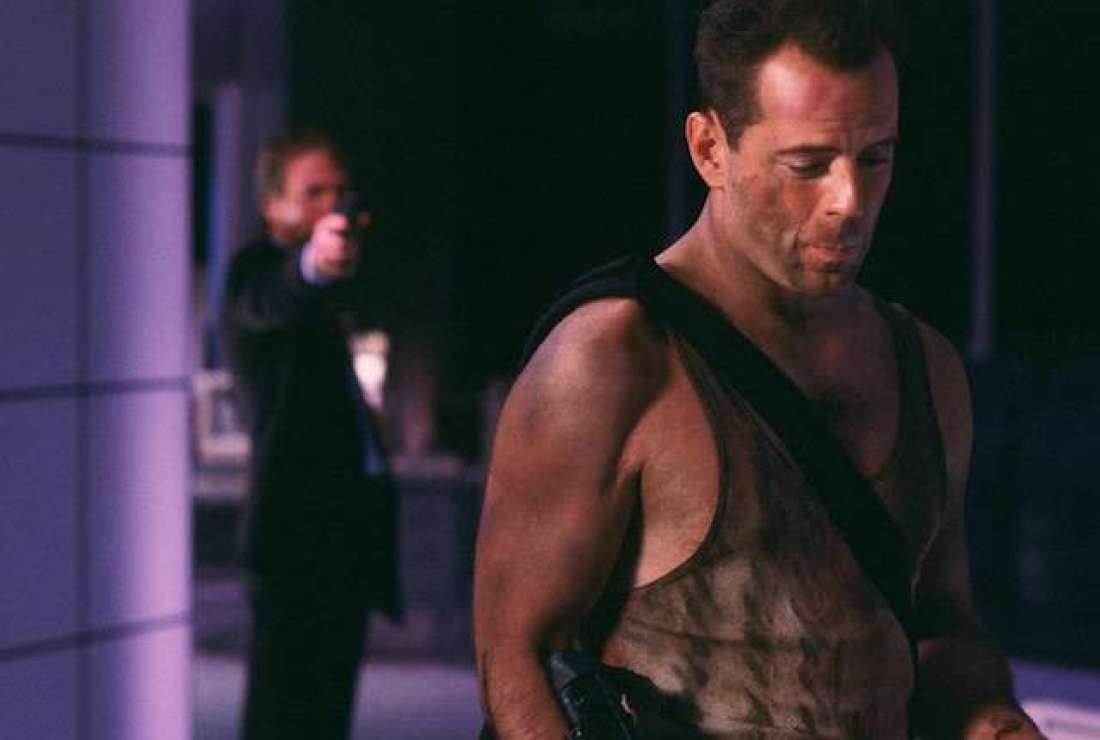
Die Hard (1988)
Rating: A+
Dir: John McTiernan
Star: Bruce Willis, Alan Rickman, Bonnie Bedelia, Reginald VelJohnson
This is an absolute textbook example of how to assemble an action film, on both the simple and more complex levels. For the former, it’s pitting a hero against a villain, and making sure that both are as memorable as possible. Yet there’s an enormous amount of craft which goes into every other aspect as well, and this is evident here, from the music (chunks of which, including its use of Ode To Joy, were inspired by A Clockwork Orange, of all things) through to providing a supporting cast that can buttress both protagonist and antagonist, helping elevate the results to the level of classic cinema.
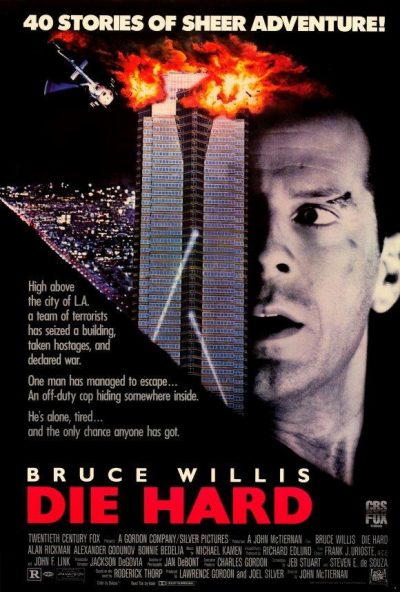 It’s often forgotten that Die Hard was based on a novel, Nothing Lasts Forever by Roderick Thorp. He wrote it following a dream he had after watching The Towering Inferno; like the film, it takes place on December 24th, though the hero in the book is visiting his daughter at her office Christmas party, not his estranged wife. The terrorists are changed too, being genuinely political, seeking documents which would exposing the company’s association with a Chilean military junta, and the novel is generally significantly darker in tone than the movie. For example, though Gruber dies by falling from a window in both, the book has the villain pulling the hero’s daughter with him.
It’s often forgotten that Die Hard was based on a novel, Nothing Lasts Forever by Roderick Thorp. He wrote it following a dream he had after watching The Towering Inferno; like the film, it takes place on December 24th, though the hero in the book is visiting his daughter at her office Christmas party, not his estranged wife. The terrorists are changed too, being genuinely political, seeking documents which would exposing the company’s association with a Chilean military junta, and the novel is generally significantly darker in tone than the movie. For example, though Gruber dies by falling from a window in both, the book has the villain pulling the hero’s daughter with him.
At the time it was made, Willis was known almost entirely for his work in Moonlighting, having only played lead roles in a couple of relatively minor features, Blind Date and Sunset. But Fox had run through its A-list without finding anyone willing and able to take on the role, so gave Bruce $5 million, a remarkably high price at the time for an actor with such a short track record. It wasn’t enough for Willis to surrender his day job. For part of the shoot, he ended up filming Moonlighting during the day, then going over to the Die Hard set at night for his scenes there.
Even less experienced in movie-making was Rickman, who had never appeared in a film before; he had done some TV, but was mostly a stage actor. The producers found Alan through his Broadway portrayal of Vicomte de Valmont in a Royal Shakespeare Company production of Les Liaisons Dangereuses – I’d love to have seen that. There’s absolutely no doubt in my mind that Rickman makes the film: his Hans Gruber is arguably the best screen villain of all-time, being smart and utterly ruthless. Yet, he’s highly charismatic, and the audience is made to feel a sneaking regard for him, not least when he kills off the film’s most annoying (entirely by design, I should stress) character.
The chess match between these two is what drives the film, and is all the more remarkable for them only having a couple of scenes together in person. Most of their communication is instead over the radio which McClane takes from a dead terrorist. Gruber tries to provoke him with barbs about cowboys, a jibe which the hero embraces wholeheartedly, replying with the franchise’s most iconic line, “Yippie ki-yay, motherfucker.” In just three words – a throwaway phrase Willis used to try and crack up the crew – he spans the entire history of action heroes, from Roy Rogers to Arnold Schwarzenegger.
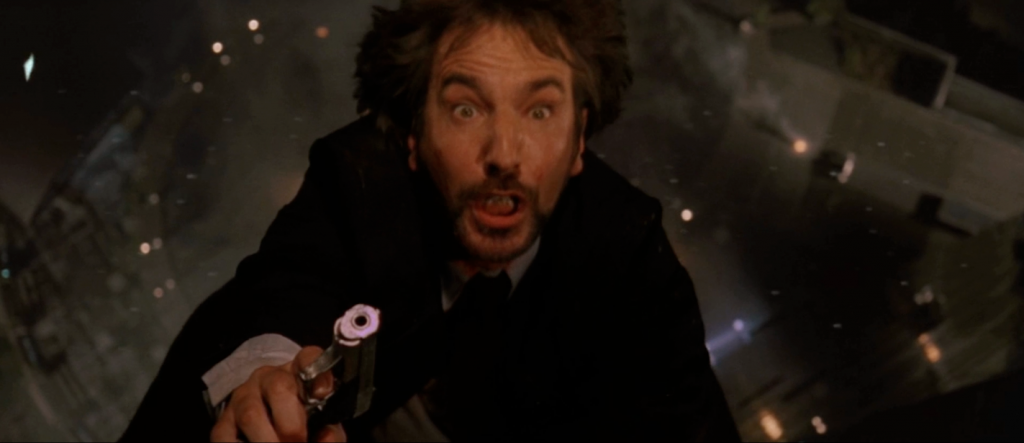
Among the film’s many remarkable facets are how little it has dated. The only bit which truly belongs to the 80’s is the limo McClane takes from the airport: the chauffeur proudly announces it as having “CD, CB, TV, telephone, full bar, VHS,” before slapping an audio-cassette into the sound-system. Everything else could easily be the here and now, from Gruber’s sharp Euro-suit to McClane’s increasingly distressed vest. The action scenes are no less pristine, with an impeccable combination of physical effects and model work that impresses on every level, and no less almost thirty years on.
But it’s all about the hero and villain. McClane is a reluctant everyman, who just wants to have a nice Christmas at home with his family: “Come out to the coast, we’ll get together, have a few laughs…” Initially, he simply doesn’t want to get involved. It’s worth noting he spends much of the first half trying desperately to get external help, and only when that fails, does he become committed to direct action to save his imperilled wife. When he does, though… McClane is an unstoppable force of nature, who may take increasing levels of damage, yet continues to chew up and spit out terrorists, on his way to the entirely satisfactory confrontation with Gruber.
For a 132-minute film, there’s a remarkable lack of slack. Even the opening reel, before a single shot has been fired, does a slickly-polished job of setting up all the characters (including Mr. Immensely Annoying!). And once things kick off, events bounce back and forth between inside and outside the building like an exhibition tennis match between two masters. Scripts, direction, production values and performances all mesh together into a whole that may never be matched. For if Die Hard is not a perfect action film, I can’t think of one better fitting that label.
[November 2008] Elements of this have dated significantly in the twenty years since it came out. Back then, you could take a gun on a plane and smoke in an airport, while gas was less then eighty cents per gallon. Fortunately, none of these are in any way relevant to the story, and everything else remains one of the most-perfect of action-movies. Even after the whole “Die Hard in a [fill in the blank]” genre has been done to death, the original still comes up fresh, new and more entertaining than the entire career of Steven Seagal. And, it has to be said, a good deal better than the three sequels.
The plot is perfectly fitted together, with a storyline so simple that it requires little or no explanation: the Western motif (“yippie-ki-yay” and Roy Rogers) is entirely appropriate, with its story of one man (Willis), alone, against the bad guys. There is no middle ground here: Hans Gruber (Rickman) and his men might as well be wearing black hats. But it’s perhaps Rickman who is the fulcrum upon which this film hinges, the greatest in a long line of British actors (whether adopting funny accents or not) in order to play memorable screen villains. What’s more remarkable is that, in Die Hard, he and John McClane don’t get to confront each other for the first 90 minutes or so, just sneer via walkie-talkie. But it’s no less tense for that, as our hero confronts and dispatches minions, using cunning as a force multiplier against vastly superior numbers.
Credit must also be given to Michael Kamen’s stirring score, which mixes Beethoven with Christmas standards to stirring effect, and the miniature work on view here is outstanding: the explosion after McClane drops the C4 into the elevator shaft is one of the most impressive in recent action cinema. If the phrase “never a dull moment” referred to any film, this is it, despite the body-count remaining flat-lined at zero for the first 20 minutes. The script is sharp, all the characters – even the minor ones – are genuinely just that, characters, rather than devices for hanging plot points, and it’s an absolute classic of the genre, no matter how many times you may have seen it. A+

Die Hard 2 (1990)
Rating: C+
Dir: Renny Harlin
Star: Bruce Willis, William Sadler, Dennis Franz, Bonnie Bedelia
It had probably been a good two decades since I last saw this, and about the only thing I remembered with clarity was the death by icicle. Having watched it again, that makes sense. For, despite having most of the same pieces in place as the original, it doesn’t come anywhere close. Sure, it’s Christmas Eve once more. You’ve got John McClane (Willis), again running round a confined space – here, a snowbound airport – in pursuit of terrorists who are threatening his wife (Bedelia). There’s a useless police chief (Franz), who interferes more than he helps, and the same is still largely true of the media. It’s even based on a largely-forgotten novel, Walter Wager’s 58 Minutes.
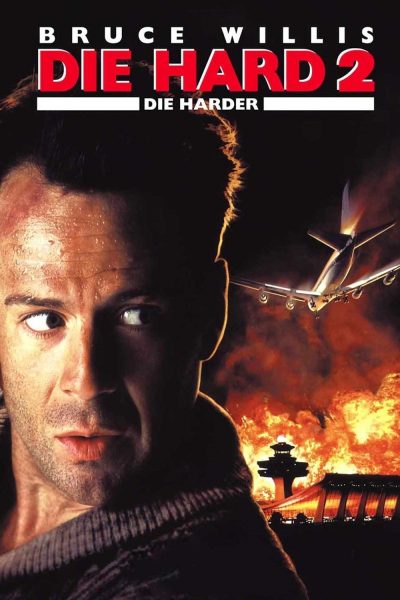 So why are the results so underwhelming? I largely blame Sadler, who plays Colonel Stuart. He is the closest the film can muster to a villain, being in charge of the rogue merc outfit who take over Washington’s Dulles airport. This is in order to rescue General Ramon Esperanza, a Central American ruler being extradited to the US on drug charges [Iran-Contra is an obvious inspiration for this angle], though if you can’t come up with ten easier ways in which this could have been achieved, you’re not trying very hard. Sadler feels like a low-rent version of Dolph Lundgren, and his bland lack of charisma stands in sharp contrast to Alan Rickman. It’s hard to be sure whether the Colonel or the General is the villain here. Neither character is up to the mark.
So why are the results so underwhelming? I largely blame Sadler, who plays Colonel Stuart. He is the closest the film can muster to a villain, being in charge of the rogue merc outfit who take over Washington’s Dulles airport. This is in order to rescue General Ramon Esperanza, a Central American ruler being extradited to the US on drug charges [Iran-Contra is an obvious inspiration for this angle], though if you can’t come up with ten easier ways in which this could have been achieved, you’re not trying very hard. Sadler feels like a low-rent version of Dolph Lundgren, and his bland lack of charisma stands in sharp contrast to Alan Rickman. It’s hard to be sure whether the Colonel or the General is the villain here. Neither character is up to the mark.
The main plus is Harlin, who does a solid enough job with the pieces, moving them around the board with brisk energy, and managing some effective sequences. The crash of the jet engineered by the terrorists is a disturbing highlight, not least because it’s piloted by a then largely-unknown Colm Meaney [one of the bit-part terrorists would similarly go on to greater success: Robert Patrick, who’d play the T-1000 in the following year’s Terminator 2] However, the greater reliance on CGI has not stood the test of time well, as the the top image illustrates. The ludicrous level of flight security seems especially anachronistic now. You will have to explain to your kids that, yes, there was a time when you could take a stun-gun onto a plane in your hand-luggage.
In the film’s defense, it was a huge success, outperforming the original at the box-office, both home and overseas – worldwide, it took about 70% more. It likely marked the high-water mark of Harlin’s career: two weeks later, The Adventures of Ford Fairlane was released, netting him the first of his four Golden Raspberry nominations. But it’s not just me who views Die Hard 2 as a pale imitation of the original. It was much less well-received by critics (except, oddly, Roger Ebert) and is rated more than a full point lower on the IMDb. I’d say even that was being very generous: it probably won’t be long before that death by icicle is, once again, the only thing I remember about it.
[TC 7] If ever a film was damned by it’s budget, this is it – every second you see on the screen cost over $10,000 and there is no way any film can live up to that. It’s a gallant attempt though. “Ten men went to blow, went to blow some airplanes” and only good ol’ Brooce can stop them, armed with stealth, cunning and enough weaponry to take on Iraq. Definitely the highest death toll of any movie this year, thanks to 200+ people in a crashed jet, not to mention the first recorded case of icicle violence (reduced to get the ’15’ rating, I think!). Mindless, totally implausible and no attempt at any characterisation whatsoever, but suddenly, half way through, I realised I was enjoying it. From then on, I was happy – still, not a patch on the first one. 7/10
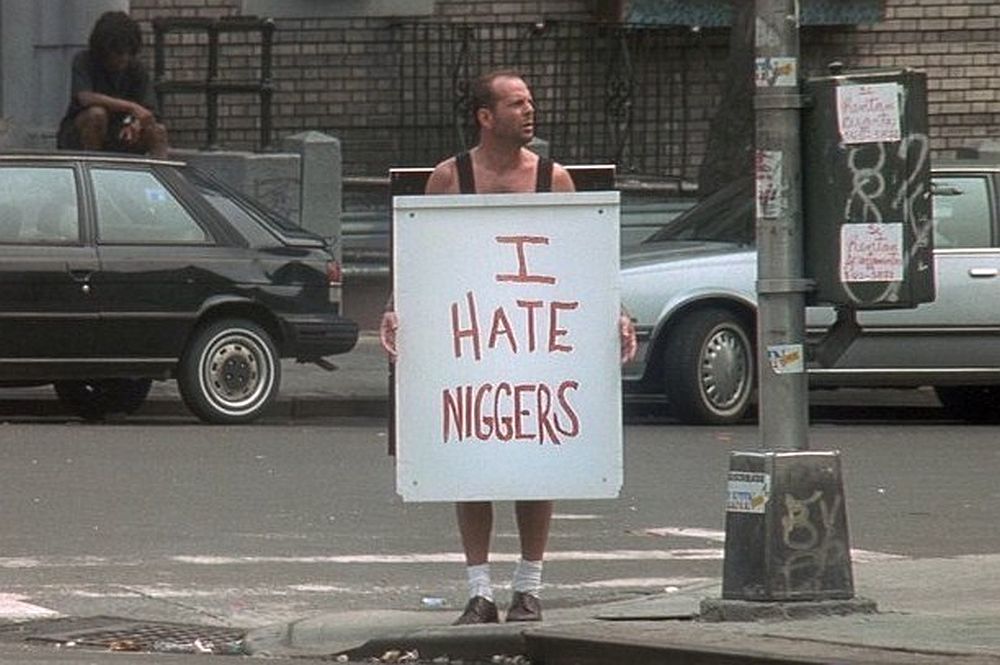
Die Hard with a Vengeance (1995)
Rating: B
Dir: John McTiernan
Star: Bruce Willis, Samuel L. Jackson, Jeremy Irons, Graham Greene
While the third entry returns to the original director, it abandons the numeral and adopts the titular approach used only for the sub-name – “Die Harder” – in part two. [I’m still waiting for them go with “The Die Hardening”] Indeed, it largely abandons the Die Hard concept overall: there’s no more having its hero forced to operate in a restricted location. Here, John McClane is instead made to run all over New York, at the whim of “Simon” (Irons), a terrorist who appears to bear a grudge against our hero, and who eventually turns out to be the brother of Hans Gruber. That it takes everyone so long to figure out the connection is one of the plot’s less believable aspects – unless McClane spent the rest of his career harassing German tourists in the Big Apple, in which case confusion would be understandable.
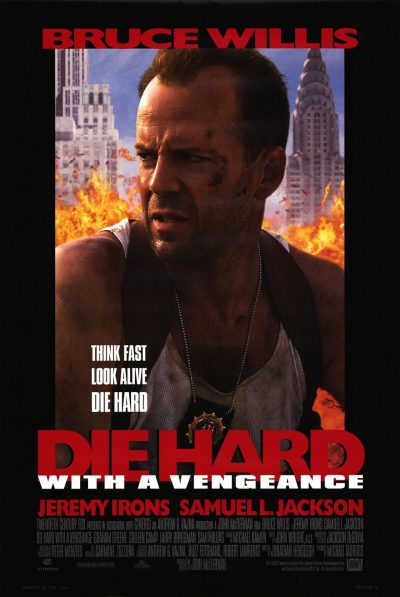 It does have some things in common with its predecessors though. The villain is again using terrorism as a smoke-screen for his real, financially-based objectives; in this case, robbing the New York Federal Reserve of billions in gold bullion. It also gives McClane a black sidekick to work with, albeit more directly, rather than over the radio. Zeus Carver (Jackson) is a shop-owner, who rescues McClane from the first of Simon’s tasks: sending the cop on a walk through Harlem, sporting a sandwich-board which reads “I hate niggers.” This angle, played largely for laughs, is one which likely seems in worse taste now than it did then. [Though when shot on location, the sign was blank – the text was digitally added later, and on TV broadcasts, typically reads “I have everybody”]
It does have some things in common with its predecessors though. The villain is again using terrorism as a smoke-screen for his real, financially-based objectives; in this case, robbing the New York Federal Reserve of billions in gold bullion. It also gives McClane a black sidekick to work with, albeit more directly, rather than over the radio. Zeus Carver (Jackson) is a shop-owner, who rescues McClane from the first of Simon’s tasks: sending the cop on a walk through Harlem, sporting a sandwich-board which reads “I hate niggers.” This angle, played largely for laughs, is one which likely seems in worse taste now than it did then. [Though when shot on location, the sign was blank – the text was digitally added later, and on TV broadcasts, typically reads “I have everybody”]
I have the same qualms about the staging of multiple terrorist attacks in New York City. For the film opens to the catchy sounds of Summer in the City, before a Manhattan store-front explodes in spectacular fashion. At the time, the 1993 World Trade Center bombing was virtually the city’s sole experience of terrorism: events since then perhaps make it a less suitable topic for the light-hearted action flick we have here. On the other hand, we were jaw-dropped to hear mocking references to both Donald Trump and Hilary Clinton, more than two decades before the pair would face off in the 2016 presidential election. I suspect writer Jonathan Hemsleigh did not see that coming…
Generally, it’s an improvement over the previous entry in two significant ways. Irons makes for a much better villain (though his sartorial choices – particularly the vest – leave a great deal to be desired), and Jackson makes a wonderful partner for Willis. Carver takes none of McClane’s shit at all, quickly forcing the cop to acknowledge that he needs Zeus, much more than the other way round. From then on, it’s almost closer in tone to Lethal Weapon than either of the first two movies, and that adds a significant helping of fun. It’s worth noting the authorities here are generally competent, in contrast to parts 1 + 2, and help John more than they hinder.
At least initially, there’s a darker tone to the hero, probably the closest the films have come to the book which inspired the original movie. When we first hear of McClane, he is suspended for some undefined reason, and later on, his boss describes John as “about two steps shy of becoming a full-blown alcoholic”. John facetiously corrects him, mouthing “one step”, and nurses a hangover for most of the movie. However, it is a hangover necessary to the plot, as the bottle of aspirin which Simon tosses him turns out to be a key clue in tracking down the terrorist at the Canadian border, just when the villain thinks he has escaped with his ill-gotten gains. [Coincidentally, the following year’s Long Kiss Goodnight had a similar location for its finale: it was directed by Die Hard 2‘s Renny Harlin and also starred Jackson]
McTiernan keeps the pace relentless: while it may be contrived, the scenario means there always seems to be something explosive counting down to zero. New York provides no shortage of opportunities for mayhem, though some of these are not as well-developed as they ought to be: I’m still trying to figure out the point of the trip to Yankee Stadium. On the other hand, I did figure out a solution to the four-gallon water problem before McClane or Carver. It’s always nice when a film gives you a reason to feel legitimately smarter than the characters…
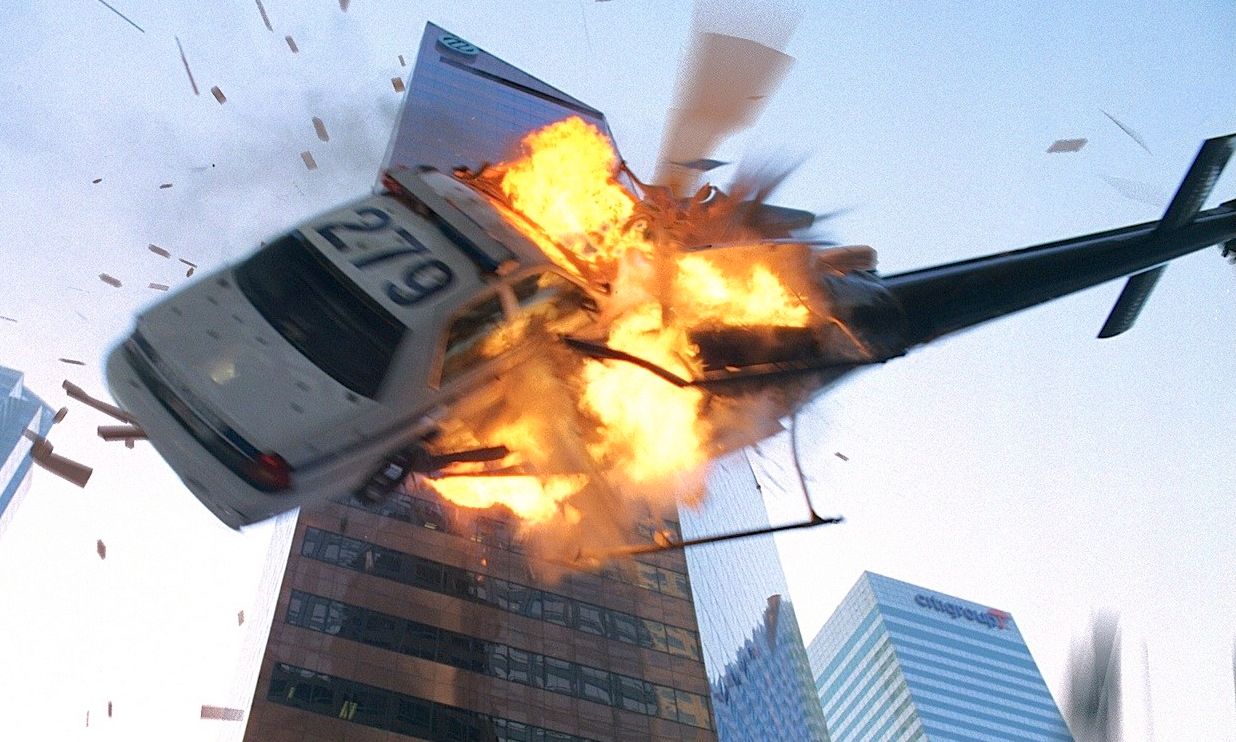
Live Free or Die Hard (2007)
Rating: B
Dir: Len Wiseman
Star: Bruce Willis, Justin Long, Timothy Olyphant, Maggie Q
Despite Vengeance becoming the biggest financial draw of the series to this point, it took a dozen years before Willis was ready to strap on the vest again. He made a number of comments at the time of release playing down #2 and #3, and saying this was the “true” successor to the original. I’m not quite sure why he took that approach: while offering solid entertainment, there’s nothing particularly special about this to substantiate his claim. Instead, it’s very much business as usual with McClane (Willis) taking on a bunch of terrorists – in this case, techno-criminals led by Thomas Gabriel (Olyphant), a former consultant turned black-hat hacker. Not exactly being John’s field of expertise, it’s fortunate he has the help of another hacker, Matt Farrell (Long). He’s a kid, unwittingly part of the plan, whom McClane rescues from Gabriel’s efforts to tie up with extreme prejudice, the loose end Matt represents.
 His skills allow McClane to keep up with Gabriel, who aims to hack and take over the infrastructure of the entire US, in order to loot the financial system of countless billions. Films with a tech-based high concept like this are always risky, because it’s easy for them to date quickly and badly. That isn’t the case here: precious little has changed in a decade about the basic idea, with concerns still valid about the vulnerability of crucial systems to outside attackers. Earlier this year, Ukraine was hit by something not totally dissimilar to the movie’s “firesale”, with the national bank, main power company and largest airport among the simultaneous victims. It could certainly happen here.
His skills allow McClane to keep up with Gabriel, who aims to hack and take over the infrastructure of the entire US, in order to loot the financial system of countless billions. Films with a tech-based high concept like this are always risky, because it’s easy for them to date quickly and badly. That isn’t the case here: precious little has changed in a decade about the basic idea, with concerns still valid about the vulnerability of crucial systems to outside attackers. Earlier this year, Ukraine was hit by something not totally dissimilar to the movie’s “firesale”, with the national bank, main power company and largest airport among the simultaneous victims. It could certainly happen here.
Bonus points for Maggie Q, as about the only significant woman character in the series since Mrs. McClane, as Gabriel’s lover and main sidekick. Though McClane is unimpressed, as only he can be. After disposing of her, he taunts the villain by suggesting Gabriel call “1-800-HENCHMEN” and ask, “Can I get another dead Asian hooker bitch over here right away?” Ouch. If Olyphant is a bit bland – he’s no Irons or Rickman – the solid plot and generally decent supporting cast help: Long (weird sidenote: he looks a bit like the guy who sits next to me at work!) isn’t as irritating as movie hackers can be, and grew on me over the course of proceedings.
The film certainly benefits from Wiseman’s fondness for practical effects, even if the merging of them with the characters is occasionally a little wobbly. At the time, the director had only helmed the first two films in the Underworld series, though fortunately we were spared the sight of Willis in a PVC catsuit. Still, can’t complain about either the scene where McClane fires a car into a helicopter (top), or faces off against an F-35B attack fighter in a 16-wheeler. Both offer the kind of certifiable insanity which large-budget action films are all about, and barely appear at all constrained by the film’s PG-13 rating. About the only loss there is McLane’s trademark line, which is now apparently addressed just to his Mom, if you know what I mean. I can live (free) with that.
[July 2007] Let’s get this out of the way first: Not As Good As The Original. Though having said that, few action films in the twenty years since have come close. Better than Part II? Certainly. Better than Part III? Yep. All told, not a bad effort, though there are a couple of problems, not least the immensely irritating geek (Long) whom Willis has first to rescue, then protect and, finally – after the bad guy (Olyphant) captures McClane’s daughter (Winstead) – team up with. Naturally, the geek who previously had no idea how to load a gun, suddenly becomes a crack-shot. Similarly, McClane, who was previously a cop with smarts, now borders on the superheroic, casually launching cars to bring down helicopters, in what may be 2007’s biggest “I’m so sure” moment, to borrow a line from Chris. The film desperately needs a villain like Alan Rickman; Olyphant doesn’t cut it, and his henchwoman Maggie Q makes a better impression, in a brutal brawl with Willis in a power-plant. [She was also in MI:3, but really, go see Naked Weapon for a better use of her talents.]
Enough grumping. There are some glorious moments, both the aforementioned battle, and the “jet fighter vs. juggernaut” sequence which has echoes of True Lies, but does go in some impressively different destructive directions. McClane remains as fine a character as ever, particularly when taunting the villain that his girlfriend is now “at the bottom of an elevator shaft with an SUV rammed up her ass.” The PG-13 rating is occasionally irritating, and one yearns for the unfettered aggression which marked earlier entries. Still, the two hours pass with admirable speed and few slack moments, though I could have done without quite so much hackerish explanation, especially since it turns out to be of little real relevance. That hardly counts as a spoiler, if you’ve seen the last three films: maybe some day McClane will actually meet some straightforward criminals, who are simply robbing a bank. That’d make a nice change.
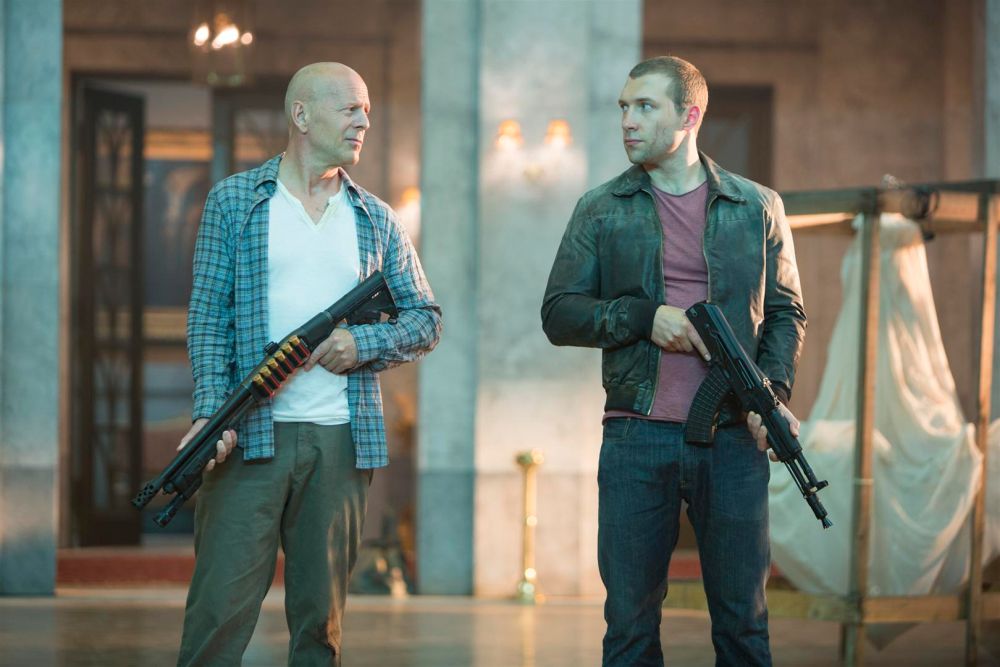
A Good Day to Die Hard (2013)
Rating: C-
Dir: John Moore
Star: Bruce Willis, Jai Courtney, Sebastian Koch, Rasha Bukvić
Most of the preceding scripts were not originally written as Bruce Willis vehicles, but were ones which had been repurposed into Die Hard franchise entries. However, you really couldn’t tell: they all seemed to be part of the same universe. Sadly, that isn’t the case here. This feels more like a political thriller, perhaps in the Tom Clancy mode, into which the lumbering dinosaur Johnius Mcclaneii has unwittingly strayed. Perhaps it’s the sudden relocation of the series from the USA to Russia? It seems largely pointless, except as a shallow grab for overseas box-office [and it appears to have worked, getting 78% of its take there, a series high]. While the previous four bounced around the States, it always felt reasonable for McClane to flash his badge and act like a bad-ass, because he was defending his homeland. Here, not so much.
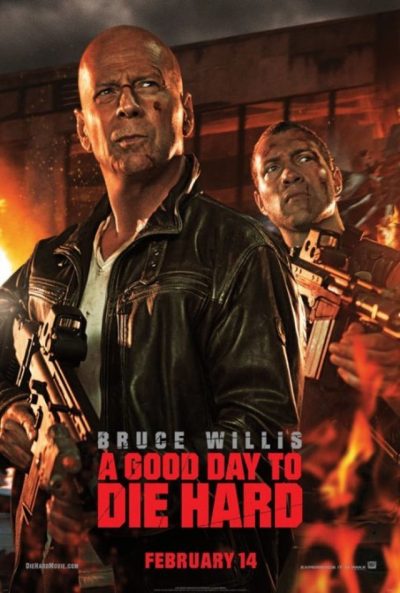 McClane is instead in Moscow after his son, John Jr, (Courtney), gets arrested for attempting to assassinate government whistleblower Yuri Komarov (Koch), and our hero seems curiously unsuited for subsequent developments. These include John II and Yuri escaping their trial, his son being a CIA spy, and rather a lot of Russian being spoken. You think they might have learned their lesson from #4, where the relationship between John and his offspring was the weakest part of the film – so weak, I completely omitted any mention of it from the review. The male spawn of McClane’s loins is no better. All he adds is the opportunity for pointless bickering. I haven’t been so annoyed by an action hero’s child since season two of 24.
McClane is instead in Moscow after his son, John Jr, (Courtney), gets arrested for attempting to assassinate government whistleblower Yuri Komarov (Koch), and our hero seems curiously unsuited for subsequent developments. These include John II and Yuri escaping their trial, his son being a CIA spy, and rather a lot of Russian being spoken. You think they might have learned their lesson from #4, where the relationship between John and his offspring was the weakest part of the film – so weak, I completely omitted any mention of it from the review. The male spawn of McClane’s loins is no better. All he adds is the opportunity for pointless bickering. I haven’t been so annoyed by an action hero’s child since season two of 24.
It’s a shame, since the start is quite awesome. After Komarov and J.Jr are broken out of court, there’s a long, spectacular and ludicrously damaging chase sequence through the streets of “Moscow” [not actual Moscow: Hungary stood in for Russia]. Even if McClane Sr. emerges virtually without a scratch – in sharp contrast to #1-4, where his damage marked the timeline – it’s as good as any I’ve seen lately, and left me wondering where the hell the film could possibly go from there. Unfortunately, the answer was: steadily downhill. Nothing the rest of the way came even close in terms of set-pieces, and the gaps between the giant fireballs were filled with an apparently disinterested Willis going through the motions, when not arguing with his son in a way better suited to an episode of Chrisley Knows Best.
Having watched all five films in five days, it’s startling to see how far the franchise has fallen – albeit over the course of a quarter-century. We had an original where everyone was smart, complete with subtle political undertones, one of the greatest movie villains of all time and lines so sharp, you could cut yourself on them. We end (for now), having sunk into a completely generic plot, with a setting which could equally be any foreign locale, containing dialogue fresh from the Script-o-Matic v1.1, and bad guys straight out of foreign casting. If this is what we can expect, I couldn’t care less if we get any more, though it would be a sad end for one of modern cinema’s most well-loved characters.
